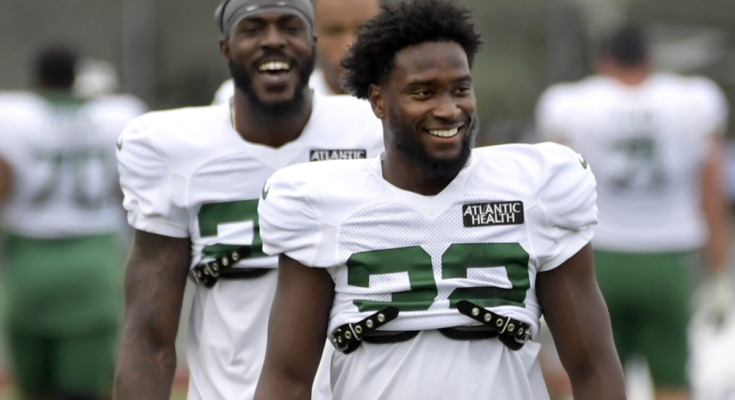The odds of a Jets running back winning the NFL rushing title this season are about the same as the chances of Rich Kotite returning to coach the team with Adam Gase as his offensive coordinator.
In terms of name recognition, you may not know a lot about the Jets stable of backs right now. And the truth is: By season’s end you may not know much more about them either.
The system is the thing for Jets first-year offensive coordinator Mike LaFleur, a disciple of 49ers head coach Kyle Shanahan, who employs a running-back-by-committee scheme that entails a dizzying dose of motion and misdirection.
Jeff Ulbrich, the Jets defensive coordinator, called the rotating-back system “an absolute pain in the ass’’ to defend because of the scheme complexity and the constant influx of fresh legs.
The face of the franchise is rookie quarterback Zach Wilson. There’s no arguing that.
But everything in this offense will go through the running game. As the running game goes, Wilson will go — particularly as he navigates through his rookie season and the massive jump from middle-of-the-road competition in college to the NFL.
The Jets tried the bell-cow running back approach when they signed LeVeon Bell for $52.5 million in 2019. The thought there was that Bell would hardly come off the field because of his dynamic running and receiving skills.
That experiment didn’t last two seasons, with Bell released before November last year, never the same player he was in Pittsburgh after sitting out the 2018 season in a contract dispute.

Enter the new Jets coaching staff, led by head coach Robert Saleh and LaFleur and a completely different scheme that employs multiple running backs rotating in and out of the game.
None of the six backs on the Jets roster is a star. The only one with any sort of pedigree is Tevin Coleman, having rushed for 2,937 yards and 24 TDs in his six-year career.
Outside of Coleman, who’s played in this system with LaFleur in Atlanta and San Francisco, the other five backs on the roster have combined for 1,482 rushing yards and just eight TDs.
“It’s an unknown group in that people look at the names and assume there’s not much there,’’ Saleh said after practice Wednesday. “They all have a dynamic trait to them that can be pretty good in the system and the way the zone scheme works. We’re excited about this group.’’
Perhaps the most intriguing of the group is Michael Carter, who was drafted in the fourth round out of North Carolina in April. The 5-foot-8, 201-pound Carter, who may give Giants back Saquon Barkley a run for largest quadriceps in town, has impressed the coaches in training camp.
La’Mical Perine was a fourth-round draft pick out of Florida last year and showed some promise as a powerful runner in his rookie season. Then there’s Ty Johnson, who ran for 254 yards and a 4.7-yard average last season, Josh Adams, who ran for 157 yards and a 5.4-yard average in 2020, and Austin Waler, who was with the 49ers last season but rushed only once for 3 yards.
“Not having the same [back on every play] is key,’’ LaFleur said. “The defense gets used to hitting someone and all of sudden the tempo changes. It keeps the defense honest.’’

Ulbrich concurred.
“Each guy brings a little something different,’’ he said. “But the system itself is the strain, because there’s this run game that is scientific and so deliberate in the way they do everything, the way they block, the way they scheme you and the way they target you, which makes it an absolute pain in the ass from the that standpoint.’’
The most recent blueprint the Jets would like to follow is that of the 2019 49ers, who ran the ball 498 times for 2,305 yards (second in the NFL) and scored a league-high 23 rushing TDs with no back running for more than 772 yards.
Coleman was part of that ’19 stable of backs in San Francisco, rushing for 544 yards and six TDs, and hopes this Jets group can follow that plan.
“We’ve all got different skill sets,’’ Coleman said. “Having a fresh guy out there definitely frustrates the defense. That should be a really good advantage for us.’’
Carter said Jets running backs coach Taylor Embree gave the running backs tape of the systems run by Kyle Shanahan’s father, Mike, in Denver and Washington, as well as Kyle’s offenses Atlanta and San Francisco to familiarize them.
“They wanted us to understand the background and the different ways the offense works,’’ Carter said. “We look forward to wearing teams down.’’
From the rookie’s lips to the ears of Saleh, LaFleur and Wilson.


